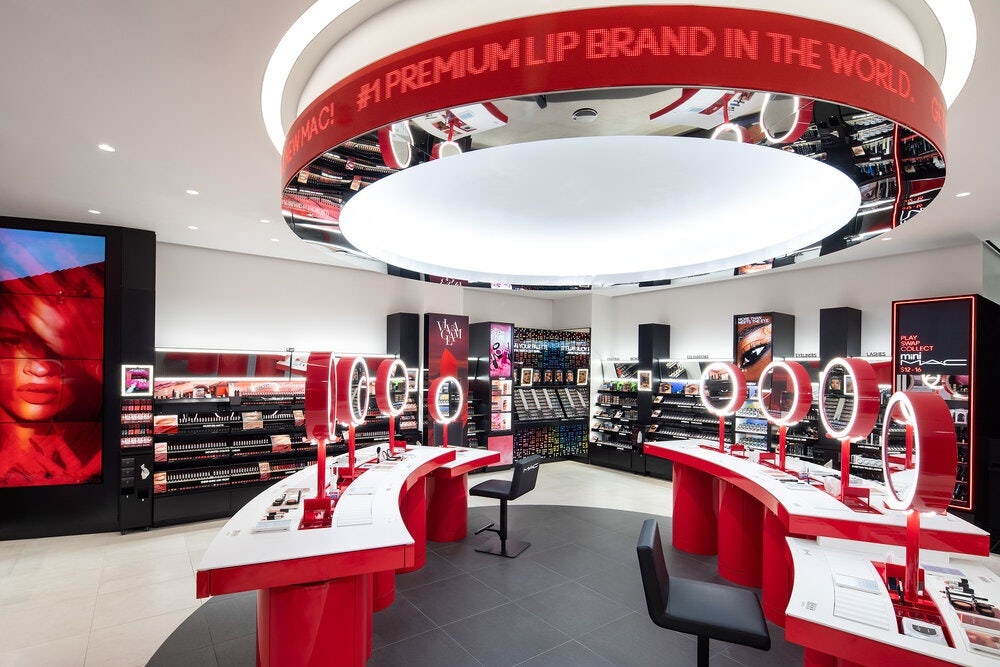Having seen revenue plummet at brick-and-mortar stores in North America and Europe this year, global brands are increasingly using China to experiment with more innovative retail strategies that can be rolled out worldwide once consumers are able to safely settle into a new (shopping) normal.
Of these strategies, perhaps the most important for Western brands has been the concept of a digitally native or “smart” store -- one that closes the loop between online experiences and offline retail. As physical stores shut their doors at the beginning of the year in China in response to the Covid-19 outbreak,
Nike#
moved quickly to retool marketing efforts and reach housebound consumers via content that included a smooth path to (online) purchase. The thinking behind this pivot went beyond just trying to keep consumers from forgetting about Nike while still spending online — i.e., a hope that strong digital efforts would translate to consumers heading back to brick-and-mortar retail once stores reopened.
For Nike, following months of livestreamed workouts (among other digital offerings), this meant a deep integration of online and offline in its revamped, 22,000-square-foot Guangzhou store, which included an inaugural “Nike Experience” that gives members who use its app access to workshops and workouts offered within the store and around the city, and Nike Fit, a technology that scans consumers’ feet and maps data points in their member profiles, helping them ensure a perfect fit when making future purchases via the Nike website.
This type of digital experimentation has also been adopted by luxury brands such as
Burberry#
, which unveiled its Open Spaces store in Shenzhen this summer in collaboration with
Tencent#
. After stepping through its doors, customers are guided by a digital point system called “social currency” (not to be confused with “social credit”), which tallies an in-store activity and engagement with the brand through a customized WeChat mini-program, which also gives consumers the ability to view and share content, reserve a themed fitting room within the store, and unlock items that are available at purchase at Thomas’s Café (named after the brand’s founder).
Another premium brand that is using China as a testing ground is
Arc’teryx#
, which recently opened its first global flagship (and largest store) in Shanghai, an immersive 8,000-square-foot space that is the first to stock the brand’s entire range of collections under one roof. While less digitally integrated than Nike’s Guangzhou store, the new Arc’teryx flagship (like Burberry’s Shenzhen concept) shows the influence of Tencent, a key investor in the consortium that acquired Amer Sports, the Finland-based parent of Arc’teryx, in 2019.
Keen to take advantage of a growing interest in outdoor and winter sports ahead of the 2022 Beijing Winter Olympics, we can expect that Tencent will use all of its content-commerce avenues — of which it has many, from WeChat to Tencent Video to Bilibili — to make Arc’teryx and its top-tier Veilance line a household name among affluent Chinese.
Starbucks#
, which now has more than 4,400 stores throughout China, tested out its first Starbucks Now store in Beijing last year, a retail space combining online and offline customer touchpoints. The small store, located in the city’s financial district, prioritizes mobile ordering and payments, with a streamlined store design that includes a dedicated pickup area for delivery couriers and very limited seating to keep the coffee (and its customers) moving. It’s a model that appears to have been inspired by domestic rival
Luckin Coffee#
’s much-hyped efforts, minus the unsustainable business practices and accounting fraud. Starbucks has announced plans to continue expanding this store format throughout the country, though no word yet on whether we will soon see Starbucks Now outlets popping up in London, Tokyo, or Los Angeles.

For some brands, “tested-in-China” models are ready for their Western debut. This month, content-commerce powerhouse
MAC Cosmetics#
expanded its Innovation Lab concept, launched and refined in Shanghai last year, to New York City. In Shanghai, MAC’s Innovation Lab combined digital and physical by asking consumers to check-in upon entering the store using MAC’s WeChat mini program and encouraging them to use it while perusing the makeup counters. The mini-program offered a virtual makeup mirror for “trying on” dozens of lipstick shades in seconds, and allowed shoppers to customize, purchase, and pick up custom 3D-printed eyeshadow palettes. Additional space upstairs included venues for masterclasses and events hosted by local influencers, again bridging online and offline marketing. Now, with the exception of the deep WeChat integration, visitors to the MAC Innovation Lab at the Queens Center mall in New York City can expect a similar experience.
The CCI take on the use of experimental retail concepts in China ahead of global rollout is that this strategy will only become more popular over the next one to two years as consumers worldwide gradually build up an appetite to shop at pre-Covid levels. It is a near certainty that the likes of Starbucks and Nike will continue to expand upon their newest retail concepts throughout China — the question now is whether they will have the appetite to invest in taking them out of the country and launching them globally. Considering that Chinese consumers are already some of the world’s most digitally native, and the learning curve for these consumers to bridge online interaction with a brand with offline experiences (as in the case of Nike’s Guangzhou store) is relatively low, will it be worth the expense and effort to replicate them elsewhere?
As 2020 comes to a close and the outlook for 2021 remains uncertain, the goal for brands — aside from encouraging consumers to spend amid an extremely challenging global economic environment — is to decide whether (and how) to infuse elements such as gamification and the use of brand-owned apps into the retail experience to drive consumers to brick-and-mortar stores and keep them entertained while there.
It’s a strategy that Arc’teryx is applying — via rooms simulating inclement weather for customers to test out its waterproof jackets — and Burberry is aiming for via its “social currency” feature in Shenzhen. Will brands try to combine retail with entertainment in the same way in Western markets to coax worried consumers back to the store once the Covid-19 pandemic finally abates? It’s possible. A better question might be, will that be enough?


